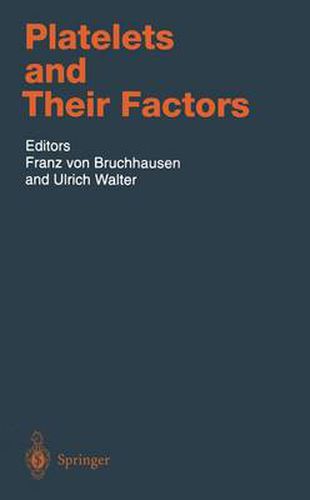Readings Newsletter
Become a Readings Member to make your shopping experience even easier.
Sign in or sign up for free!
You’re not far away from qualifying for FREE standard shipping within Australia
You’ve qualified for FREE standard shipping within Australia
The cart is loading…






This title is printed to order. This book may have been self-published. If so, we cannot guarantee the quality of the content. In the main most books will have gone through the editing process however some may not. We therefore suggest that you be aware of this before ordering this book. If in doubt check either the author or publisher’s details as we are unable to accept any returns unless they are faulty. Please contact us if you have any questions.
Platelets playa fundamental, life-saving role in hemostasis and blood clotting at sites of vascular injury. Unwanted platelet activation and arterial thombus formation are, however, implicated in the onset of myocardial infarction, stroke, and other cardiovascular diseases. Acceptance that platelets play a major role in the pathogenesis of atherosclerosis including coronary heart disease has revolutionized the pharmacological treatment of cardiovascular diseases, and aspirin is now an essential antiplatelet drug and the golden standard for future developments. Yet the search for better and perhaps safer antiplatelet drugs is one of the most active areas of investigation in both basic and clinical research. Platelets, especially human platelets, have also emerged as one of the major models for the study of inter- and intracellular signal transduction pathways. Many biochemists, cell biologists, pharmacologists, pathologists, hematologists, and cardiologists find platelets useful for studying processes such as adhesion, inside-out and outside-in signalling through the plasma membrane, channels, calcium homeostasis, protein kinases, the network of intracellular signal transduction cascades, and the release of vasoactive substances. The aim of the editors has been to compile chapters summarizing the current state-of-the-art information on the biochemistry, cell biology, pharmacology, and physiologic and pathophysiologic roles of human platelets. We hope that this volume represents the major aspects of current platelet research although it is perhaps inevitable that certain areas are covered less thoroughly than others. We would like to acknowledge the excellent help and support of the Springer-Verlag staff, in particular that of Ms. Doris Walker.
$9.00 standard shipping within Australia
FREE standard shipping within Australia for orders over $100.00
Express & International shipping calculated at checkout
This title is printed to order. This book may have been self-published. If so, we cannot guarantee the quality of the content. In the main most books will have gone through the editing process however some may not. We therefore suggest that you be aware of this before ordering this book. If in doubt check either the author or publisher’s details as we are unable to accept any returns unless they are faulty. Please contact us if you have any questions.
Platelets playa fundamental, life-saving role in hemostasis and blood clotting at sites of vascular injury. Unwanted platelet activation and arterial thombus formation are, however, implicated in the onset of myocardial infarction, stroke, and other cardiovascular diseases. Acceptance that platelets play a major role in the pathogenesis of atherosclerosis including coronary heart disease has revolutionized the pharmacological treatment of cardiovascular diseases, and aspirin is now an essential antiplatelet drug and the golden standard for future developments. Yet the search for better and perhaps safer antiplatelet drugs is one of the most active areas of investigation in both basic and clinical research. Platelets, especially human platelets, have also emerged as one of the major models for the study of inter- and intracellular signal transduction pathways. Many biochemists, cell biologists, pharmacologists, pathologists, hematologists, and cardiologists find platelets useful for studying processes such as adhesion, inside-out and outside-in signalling through the plasma membrane, channels, calcium homeostasis, protein kinases, the network of intracellular signal transduction cascades, and the release of vasoactive substances. The aim of the editors has been to compile chapters summarizing the current state-of-the-art information on the biochemistry, cell biology, pharmacology, and physiologic and pathophysiologic roles of human platelets. We hope that this volume represents the major aspects of current platelet research although it is perhaps inevitable that certain areas are covered less thoroughly than others. We would like to acknowledge the excellent help and support of the Springer-Verlag staff, in particular that of Ms. Doris Walker.